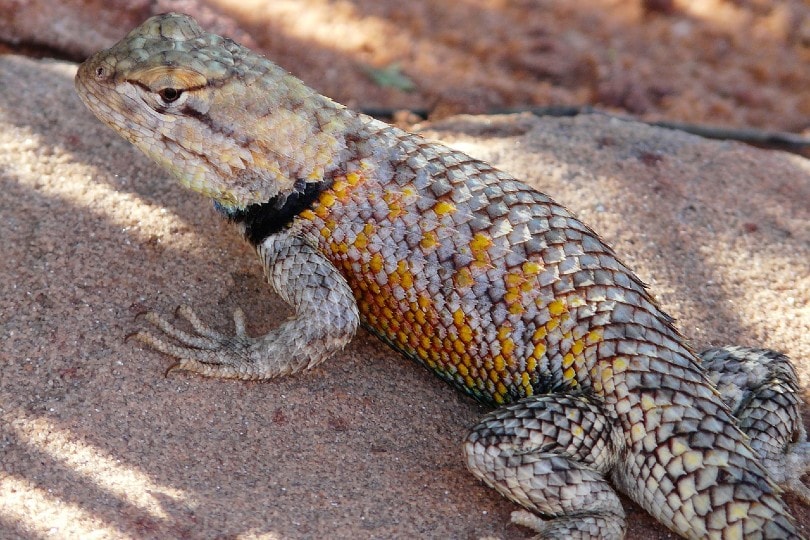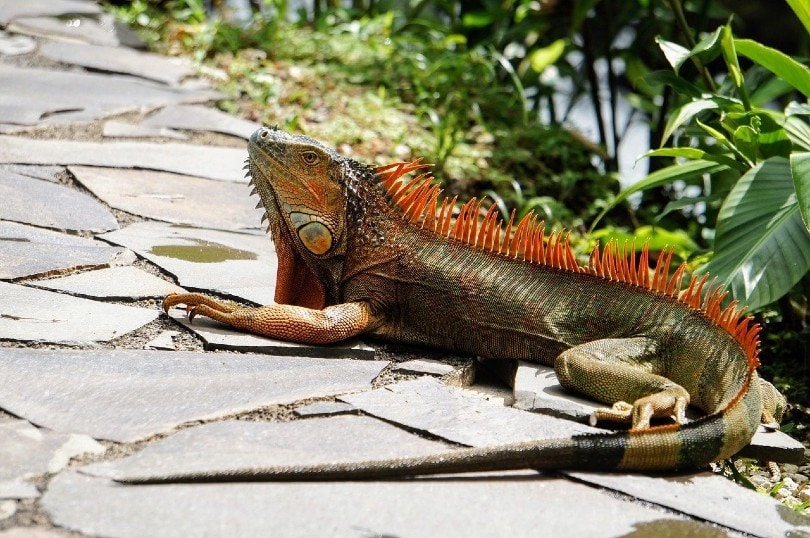
What do Usain Bolt and an iguana have in common? Their velocity, of course! Although Bolt peaked at 27.78 miles per hour (mph) during the World Championships in Berlin in 2009, the iguana is no slouch, reaching a top speed of 25 mph. So, don’t be fooled by its sturdy build: this dragon-like reptile might look a little clumsy, but it is swift and agile on land!
Now that you know how fast an iguana can run, you might be wondering why and when it should run so fast? And if you keep one as a pet or plan to do so, will it want to escape all the time? Keep reading to find out!
How Do Iguanas Live in the Wild?
The green iguana, which spends some 96% of its time inactive, gives an impression of indolence. It has been calculated that it devotes 3% of its life to reproduction and only 1% to foraging. This large animal does not need to travel much to get its food. It feeds a lot on the spot during rainy periods and eats less during dry periods.
So, green iguanas spend almost all their time on top of trees. Plus, adult iguanas are very territorial animals; a territory is generally equivalent to a tree, although several males can share a huge tree, each defending a “portion.” The chosen tree provides for all the group’s needs — food, thermoregulation, or nighttime rest. When there is no threat, it is the insufficiency of resources that triggers displacement.
Thus, apart from a few rare escapades on dry land to seek the sun there, dives in the water or jumps from tree to tree to escape danger, or even, for females, migrations to the site of egg-laying, green iguanas do not leave their favorite tree.

Why Do Iguanas Need to Run Fast?
Since iguanas spend all their time in their trees, why run? Mainly to escape a predator agile enough to reach the iguana’s haven, such as a snake or a hawk.
Thus, the speed and agility of the iguana serve as a defense mechanism to keep it out of reach of terrestrial or winged predators, just like its tail, teeth, and nails, which also act as dangerous weapons.
However, when the iguana comes down from its tree to look for food or sunbathe, it crawls slowly, the belly dragging on the ground, the legs bent, waving its tail.
If, on the other hand, it leaves its tree to flee from a predator, the iguana shows impressive agility: it can perform a leap into the void, its limbs outstretched, its tail fixed. It can also start to run very quickly, legs straight, belly high above the ground, tail wagging.
The iguana is also an excellent swimmer who easily moves in the water; it progresses rapidly on the surface, head erect, paws extended backward, its wavy tail serving as a propellant. However, its speed in water does not equal that on land.

Will Your Pet Iguana Want to Run Away?
Unless he escapes from his terrarium and your dog starts chasing him, it’s highly unlikely that your iguana will want to burn off his energy by running like crazy all day! Indeed, his agility and speed are above all defense mechanisms against predators and not a daily exercise need, as is the case for a dog.
However, young iguanas are more active and energetic than their parents. Nevertheless, they do become lazier in adulthood, and they are pretty happy just lounging on their favorite perch all day.
Besides, it would be a terrible idea to let your iguanas run free in your home, as they can be quite destructive and need high ambient temperatures (95°F to 100°F) to survive.
Iguanas are pets that have high care requirements, but daily jogging is not one of them!

Wrapping It Up
Although iguanas can clock in at 25 mph, running is not their favorite activity. They scamper away primarily to escape their predators and won’t hesitate to use their powerful tails and sharp nails to defend themselves. Nevertheless, although their speed is impressive for a reptile, many other land animals can outrun iguanas, such as…your domestic cat!
See Also:
Featured Image Credit: islavicek, Shutterstock








